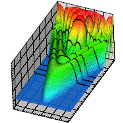Department of Physics and Astronomy: Publications and Other Research

Anthony F. Starace Publications
Document Type
Article
Date of this Version
10-17-2017
Citation
In: Ultrafast Nonlinear Imaging and Spectroscopy V, edited by Zhiwen Liu, Iam Choon Khoo, Demetri Psaltis, Kebin Shi, Proc. of SPIE Vol. 10380, 103800D
doi: 10.1117/12.2273560
Abstract
Recently ultrafast electron diffraction and microscopy have reached unprecedented temporal resolution, and transient structures with atomic precision have been observed in various reactions. It is anticipated that these extraordinary advances will soon allow direct observation of electronic motions during chemical reactions. We therefore performed a series of theoretical investigations and simulations to investigate the imaging of electronic motions in atoms and molecules by ultrafast electron diffraction. Three prototypical electronic motions were considered for hydrogen atoms. For the case of a breathing mode, the electron density expands and contracts periodically, and we show that the time-resolved scattering intensities reflect such changes of the charge radius. For the case of a wiggling mode, the electron oscillates from one side of the nucleus to the other, and we show that the diffraction images exhibit asymmetric angular distributions. The last case is a hybrid mode that involves both breathing and wiggling motions. Owing to the demonstrated ability of ultrafast electrons to image these motions, we have proposed to image a coherent population transfer in lithium atoms using currently available femtosecond electron pulses. A frequency-swept laser pulse adiabatically drives the valence electron of a lithium atom from the 2s to 2p orbitals, and a time-delayed electron pulse maps such motion. Our simulations show that the diffraction images reflect this motion both in the scattering intensities and the angular distributions.
Included in
Atomic, Molecular and Optical Physics Commons, Elementary Particles and Fields and String Theory Commons, Plasma and Beam Physics Commons


Comments
Copyright © 2017 SPIE. Used by permission.